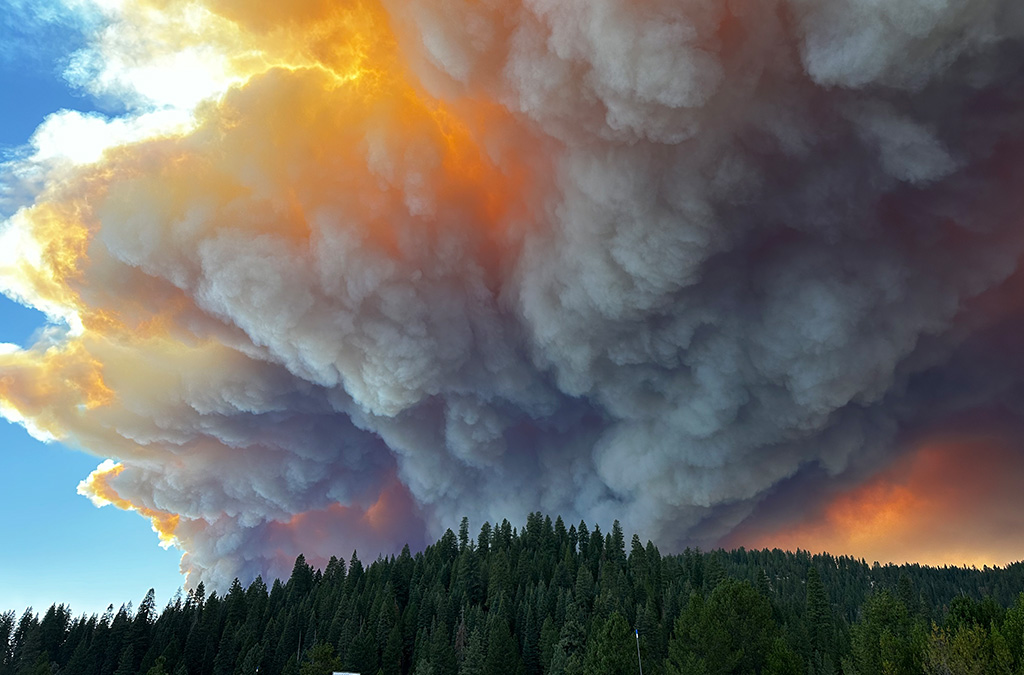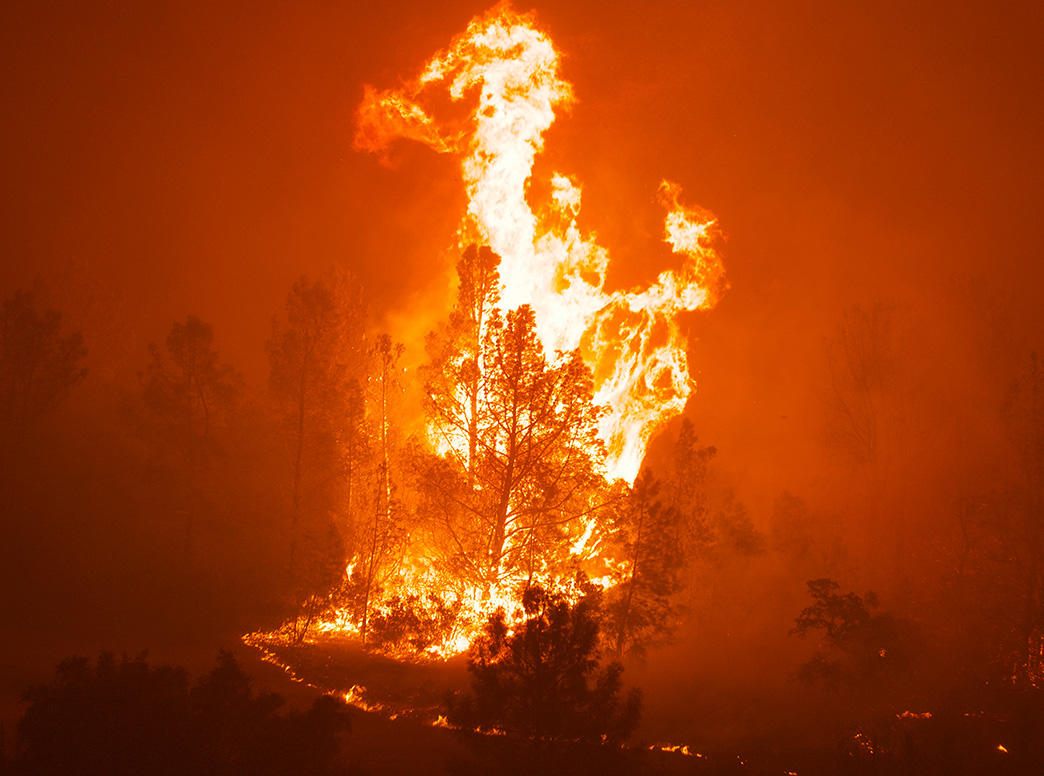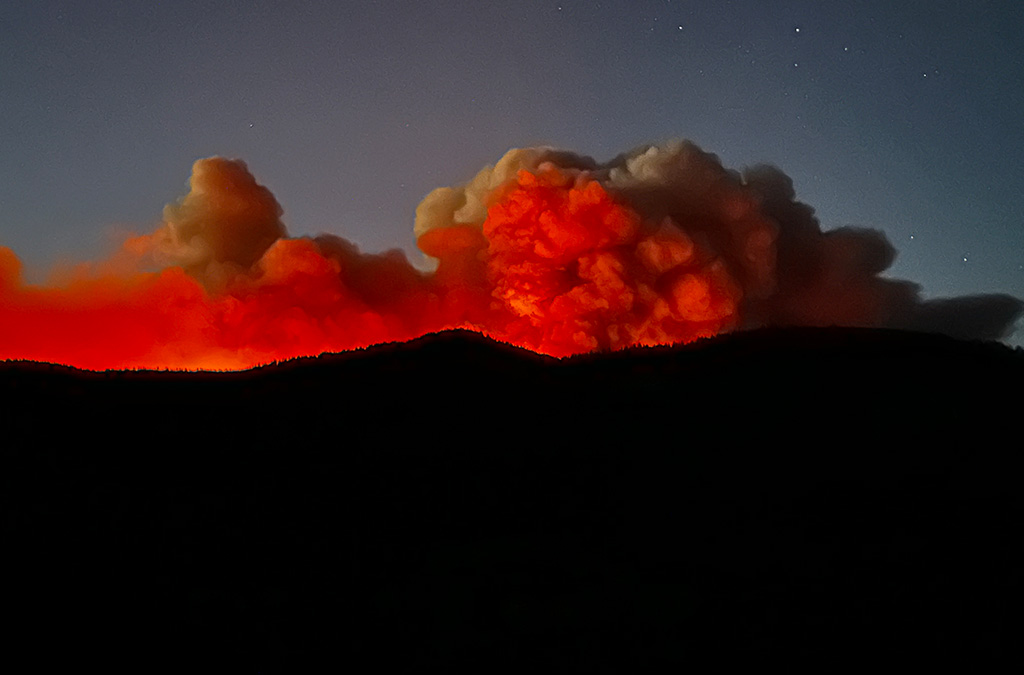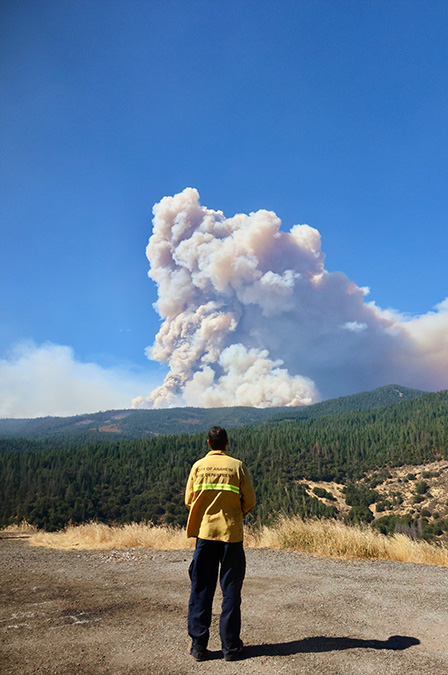Chasing Fire and Rain, Geography Student Builds Career Documenting Natural Disasters
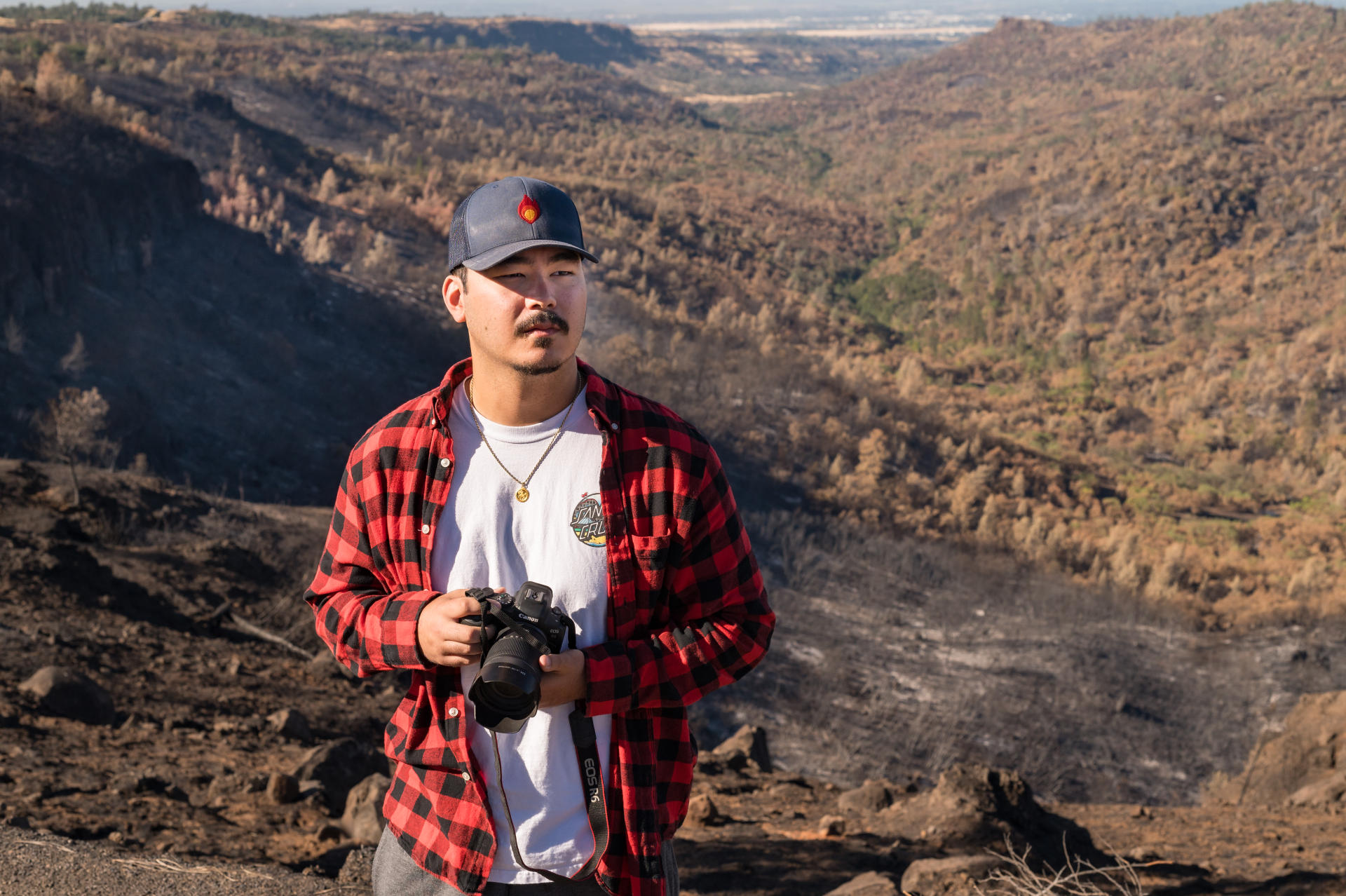
From a turnout on Highway 32, looking across a sea of charred trees and vegetation, Michael Steinberg marvels at the landscape, zooming in with his camera to get a closer look.
“A lot of interesting features were hidden in the canyon before this fire,” he said.
We walk the service road deeper into the canyon to get a better view of the expansive burn scar, and he stops to admire new buds growing alongside patches of ash.
Hopeful signs, he notes.
Over a month ago, Steinberg was in this exact spot watching the Park Fire gain momentum. Plumes of smoke rose from Upper Bidwell Park and spiraled in apocalyptic columns, fueled by a sustained heatwave and strong winds. As a reporter for Watch Duty, a wildfire mapping and alert app providing real-time information, he was among the first on the scene to capture images of the fire. And as it grew and careened north—blazing a path of almost 430,000 acres—he followed it.
Tiring days became exhausting weeks. Reporting from the front lines alongside firefighters, his @norcalstormchasing Instagram account provided an inside look at the state’s fourth-largest wildfire in history. Steinberg’s photos and videos of the fire were viewed thousands of times on social media and reposted by major publications like The Guardian and Los Angeles Times.
While the publicity has been a welcome perk, the geography and planning major says he is not covering wildfires for fame. “I’m here to document what the fire is doing to people and to the landscape,” he said. “Visual storytelling during these kinds of natural disasters is very important. I would still be out there even if I could never post another photo online.”
It might seem like Steinberg’s work has taken off suddenly, but he’s been honing his craft for years. Working as a stringer for Live Storms Media since 2022, a company that produces 4k stock footage of major weather events like hailstorms, blizzards, hurricanes, and floods, he’s well-accustomed to dropping everything to get in his car and chase down a major event. Balancing work and studies, he has filmed whiteout conditions and storms at Donner Pass through the Sierra Nevada Mountains, and across state lines in Texas, Iowa, and Oklahoma.
His passion for documenting major disasters and weather events stems from a childhood fascination with storms—a morbid curiosity that complements another pastime, photography. Growing up in Portland, Oregon, exploring the variety of landscapes, dramatic shifts in seasons, and striking shades of green in his old backyard provided a good base to study the relationship between weather patterns and physical environments.
“As a kid, my dream was to be a storm chaser,” said Steinberg. “That’s pretty rare here on the West Coast but I realized there were other things to document. I got into snow chasing. When I got a job with Live Storms Media, that’s when I realized I could cover wildfires.”
These realizations represented a giant shift for Steinberg, who’d previously been studying English literature at Chico State. After switching majors to geography and planning, his new home on campus offered a nurturing space to bring his talents and interests together on a new level.
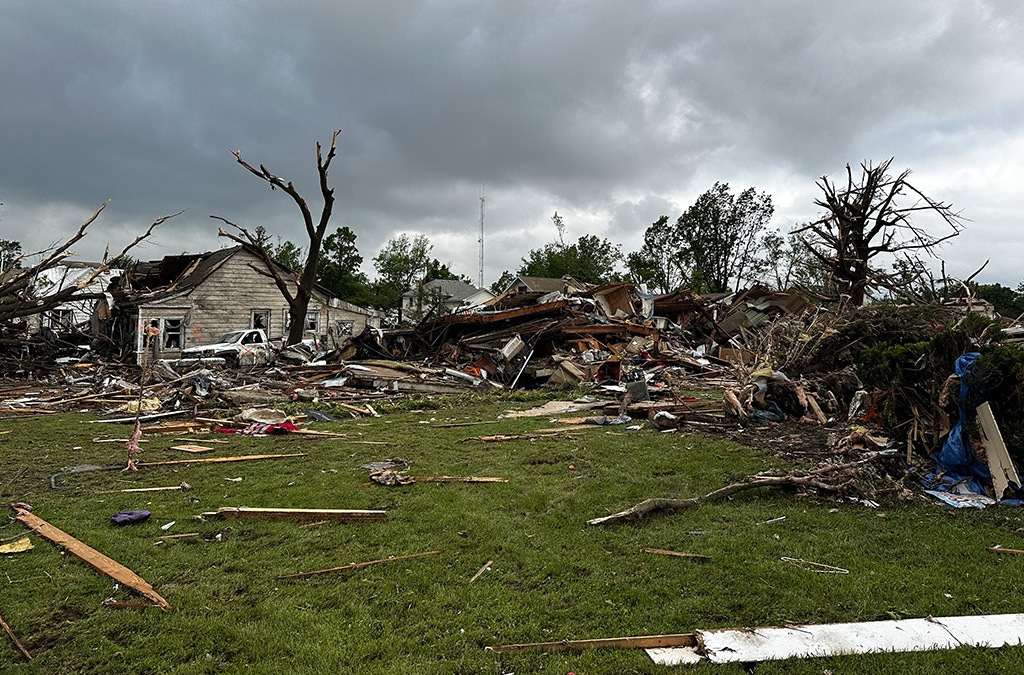
“I realized that physical geography directly translated to field experience in the path I want to take for my career. I’ve gotten more into wildland fire management and prescribed burning, and this goes hand-in-hand with my work.”
In landscape photography, positioning and land knowledge are essential for nailing the shot. During the Park Fire, Steinberg was able to apply things he learned directly in class to his craft. “I knew if the fire became established and lined up with Big Chico Creek Canyon, it could run straight up toward Forest Ranch,” he said. Understanding how fire behaves proved to be useful and terrifying this time, as Steinberg was acutely aware of the danger neighboring communities were facing.
“I knew this because I learned from my professor, Don Hankins, that the biggest threat to Forest Ranch would be if a fire were downslope, like down in the canyon, with the southwest wind moving up, and that’s exactly what happened,” he said. “I was really scared, not for myself but for others who would need to evacuate.”
These lessons continuously reaffirm his appreciation for those who dedicate themselves to fighting fires in times of crisis. One way he shows this is by honoring their work through his own. “I always try to get photos of the firefighters so that I can share with them,” said Steinberg. “They’re working in really harsh conditions trying to save communities, and it’s important to remember that. Giving back to them is one of the most rewarding parts of this work.”
Steinberg’s efforts are well-appreciated. Jason Hibbard, a fire line paramedic with Anaheim Fire and Rescue, sees the value of documenting their efforts. “Michael’s work is significant because it keeps a record of everything we’re doing,” said Hibbard. “We’re able to reference back as years go on, and have proof, this record, this remembrance of what we actually did, what we were actually up against.”
Hibbard spent several weeks in Chico during the Park Fire and connected with Steinberg on several occasions. “Michael is such a personable guy and very enjoyable to be around. He was there and in all the right moments to capture it all. He has a gift for understanding the water patterns, the fire behavior, the topography, what’s happening.”
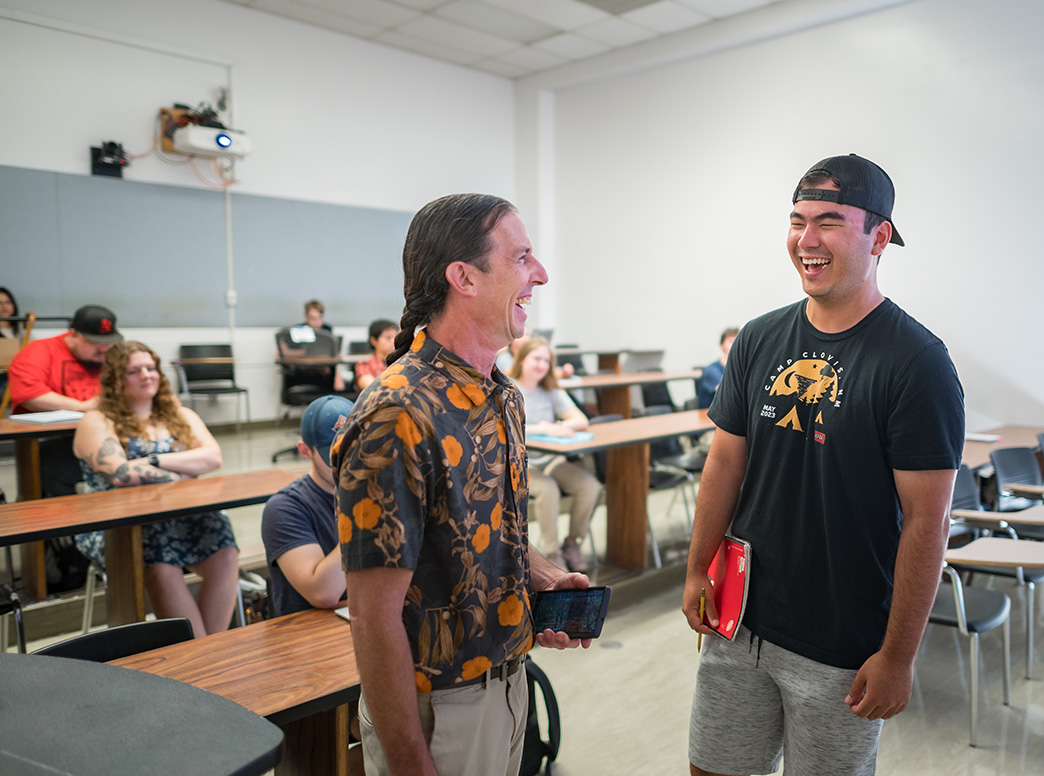
With a year left of his bachelor’s degree, Steinberg is acutely aware his career has a long shelf life and many challenges ahead— given the rise in numbers of natural disasters due to climate change.
“Two winters ago, we had record-breaking snowfall and flooding and this year was record-breaking heat in summer,” said Steinberg. “Climate change is not just making things drier; it’s making the extremes more extreme.”
Steinberg believes there will be more fires of this magnitude. But right now, with the Park Fire at 98 percent contained as of September 5, he continues to look for positives. He points out areas where cultural burning practices have proven effective in making the land more resilient to wildfires. “There’s not a lot you can do to mitigate tornadoes or floods, but fire is a tool that works,” Steinberg said.
As we get back into his SUV, preloaded with camera gear and personal protective equipment, the drive back to Chico feels peaceful. It’s easy to forget that he’s in his twenties and just starting a career that is taking shape day by day, storm by storm, fire by fire.



